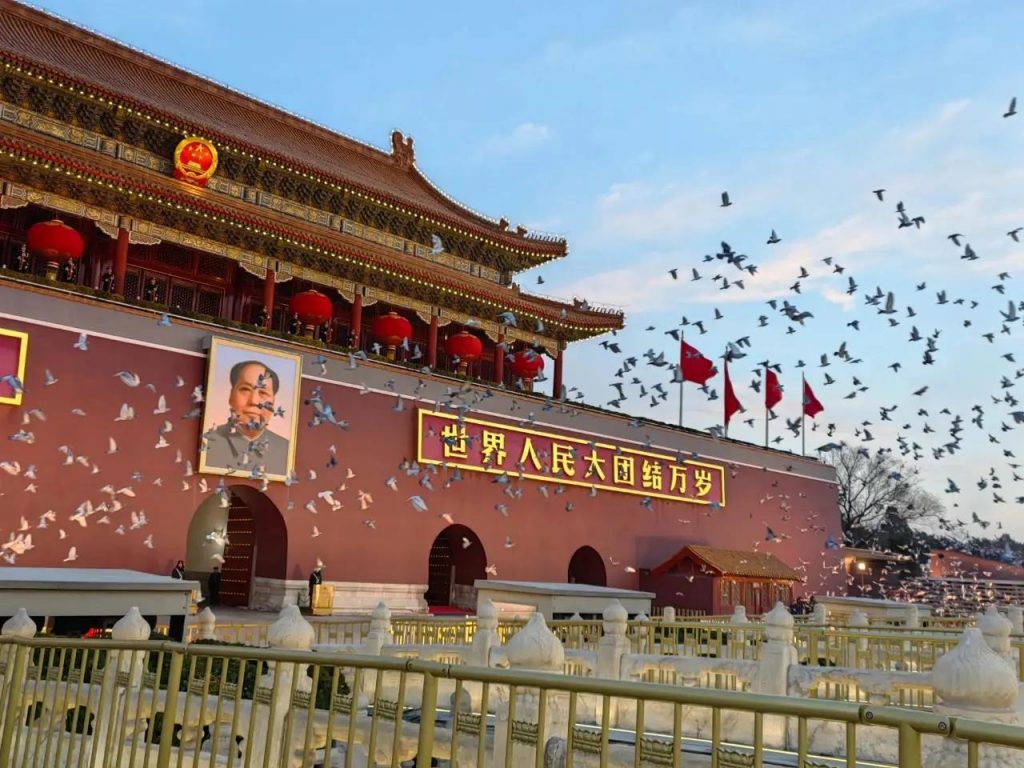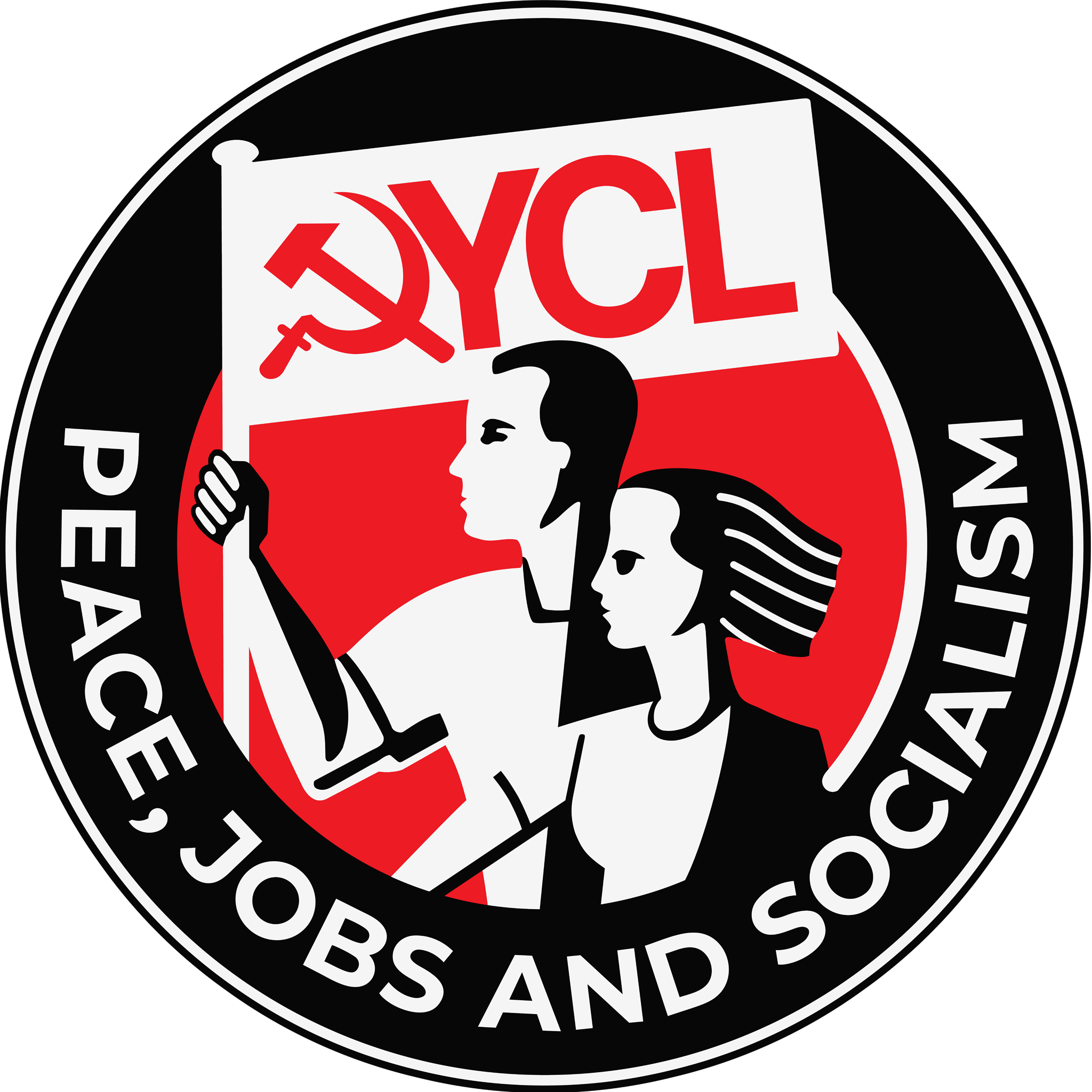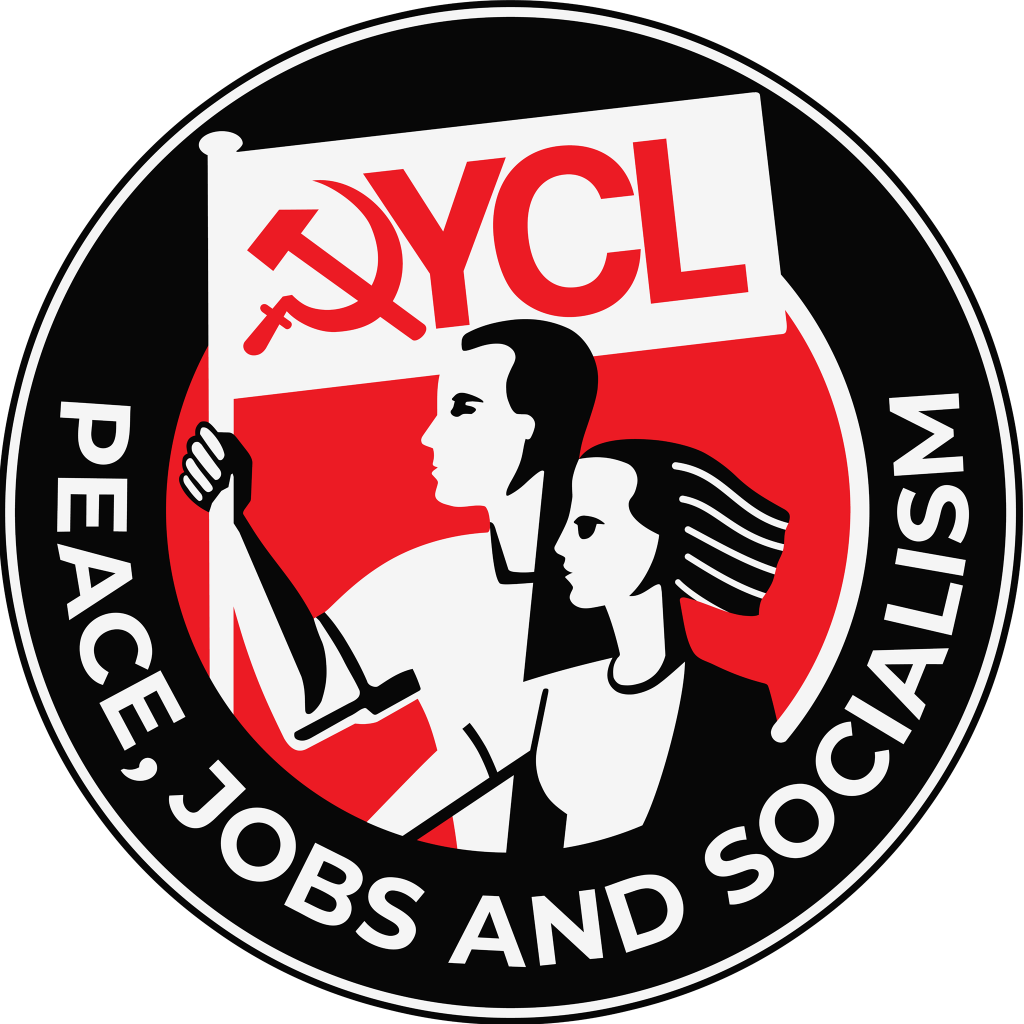The People’s Republic of China (PRC) has achieved a remarkable rise since its founding in 1949, transforming from one of the world’s poorest nations into its second-largest economy and a significant challenge to the post-Cold War hegemony of the United States of America. With this, China has become the most prominent communist-led country today, where a Communist Party of over 99 million members governs a country of 1.4 billion people—over one sixth of the world’s population. The country is therefore a central feature of debates about Marxism-Leninism in the twenty-first century, the construction of socialism, and a US-led “New Cold War”. It is essential then to understand what China is really like, how it got here, and where it is headed.
Before the revolution, China was a semi-colonised and semi-feudal country, with a large peasantry, feudal landlords, and the interference of foreign imperialist powers in the economy, politics, and society. Reflecting on these conditions, Mao Zedong, who would go on to found the PRC and lead the country from 1949 to 1976, set out how the country might establish a developed, socialist democracy. First, China would need a democratic revolution involving the proletariat and peasantry, but also progressive elements of the petty bourgeoisie and national bourgeoisie, those elements that were hostile to feudalism and the colonisation efforts of the imperialist powers. These four classes are represented on the Chinese flag by four stars, surrounding a larger star representing the proletarian leadership of the Party.
Mao outlined such a revolution in his concept of New Democracy, which distinguished itself from the old democratic republics established by bourgeois revolutions in Western countries, which had led to exclusive rule by the capitalist class, or dictatorships of the bourgeoisie. This revolution would establish “the joint dictatorship of several revolutionary classes”, led by the proletariat and its vanguard party, the Communist Party of China. Such a republic would pave the way for an independent, industrialising, and democratic China, which would lay the basis for the construction of socialism.
The Civil War and the United Fronts
The efforts of the communists in China began in the early 20th Century, with the founding of the CPC in July 1921. At this point, the membership of the Party was tiny, counted in the dozens, not the millions it is today, and the nationalist Kuomintang (KMT) party was a large force. The Soviet Union provided aid to the KMT and influenced them into a more Leninist organising structure, while also advising the burgeoning CPC on cooperation with the nationalists. Multiple members of the CPC, including Mao Zedong, would also become members of the KMT in 1923, and by 1924, the First United Front had been established on the basis of KMT founder Sun Yat-Sen’s “three major policies”: “allying with the Soviet Union, cooperating with the Communist Party of China, and promoting peasants’ and workers’ interests”.
This United Front waged a struggle to defeat the warlords controlling various parts of China and unite the country. However, the parties’ alliance would not last. Following the death of Dr Sun, KMT figure Chiang Kai-shek oversaw a dramatic shift to the right and a strategic alliance with the United States, carrying out a purge of the communists, who were already growing in numbers and support, and of the wider left of the KMT. This included the April 1927 Shanghai Massacre, in which thousands of communists and progressives were killed. With the collapse of the First United Front began the Chinese Civil War.
The early efforts of the Communists in the Civil War culminated in 1931 with the establishment of the Jiangxi Soviet, where on the anniversary of the October Revolution (November 7th), Mao Zedong declared the Chinese Soviet Republic. Throughout the existence of this republic, its main base area in Jiangxi faced a series of encirclement campaigns by KMT forces until 1934 when the communists were forced into a strategic retreat—the Long March. It was in this difficult period, in which the First Red Army travelled more than 5.5 thousand miles and lost over 50,000 men, that Mao Zedong’s leadership would garner him greater support and his ideas became further accepted within the Party. This included Mao’s conception of an agricultural proletariat and lower peasantry that was a revolutionary class, which differed somewhat from the Soviet outlook.
After the Long March, the civil war would face an interlude in which a Second United Front of the CPC and KMT was formed. This happened shortly before Japan launched its invasion of 1937. The communists fought a guerilla war against the Japanese primarily in the north of the country, and the nationalists kept the Japanese at bay in other areas. This period saw the USSR provide assistance in the form of advisors, military, and financial aid. While the nationalists and communists were united in their struggle against the Japanese imperialists, there were irreconcilable contradictions between the two, and by 1946, the civil war returned.
This civil war would come to an end by early 1949, with nationalist forces defeated or deserting, and the nationalist government retreating from mainland China to the island of Taiwan. The division of the country between the previously KMT-led Republic of China, now controlling only Taiwan, and the communist-led People’s Republic of China (declared October 1st, 1949) continues to this day. Despite efforts by the USA and Western allies to obfuscate the history, it must be emphasised that Taiwan was always a part of China and the modern “independence” campaign seeks to turn Taiwan into a military outpost for the USA and allies in its encirclement of China—in tandem with existing bases in the region such as in Japan and South Korea.
The Great Leap Forward
One of the most misrepresented periods of the early PRC is the Great Leap Forward. It is often put forward as, at best, a disastrous movement that brought about famine through the inherent inferiority of socialist policy to capitalist; or in some circles, an intentional famine by a caricature “crazed dictator” depiction of Mao Zedong. The reality is, as with most things, far more nuanced.
The Great Leap Forward followed after the initial land reform in the PRC that gave the mass of the peasantry ownership over their own land, rather than the ownership of most land by a few big landlords. This was developed further with the formation of agricultural cooperatives, where the resources and management of land was pooled and integrated on a one or two village-wide scale. Surplus grain was able to be sold on the international market, which brought in the funds the PRC needed to invest in technology and develop its industry. These ideas were taken further in some areas, as by 1957, collectives began to develop where not only management but ownership of the land began to merge. These collectives were on a larger scale than the cooperatives, maybe a group of villages, and by 1958 these ideas were taken further with the first People’s Communes. These Communes were even larger, benefiting from economies of scale, and 1958 saw bigger harvests than before.
The Great Leap Forward drew on the early successes in collectivising agriculture to push forward one of the key visions of Marxism: of overcoming the urban-rural divide and developing an integrated economy. It was an effort to further agricultural production, and to contribute to industrial development through generating agricultural surplus that could bring in the capital needed to invest in industry. A key aspect was diversifying industrial investment into rural areas, not just existing urban centres, establishing industry in the villages themselves.
The Great Leap Forward encountered serious issues, however. While the preceding years had seen a period of favourable weather, which aided the growth in agricultural production, a disruption in weather patterns in 1959 brought too little rain in some regions, and too much in others. This alone did not cause the deaths that followed, but it must be highlighted that it was a natural climate phenomenon that created the conditions for food shortages, and this fact alone rubbishes any red scare notions of an intentional famine.
The other aspect, however, was a human one. In certain areas, local CPC officials had been fudging the numbers to make their agricultural production look more impressive than it was. It may only have been reporting an extra percent or so of production, but even this has a sufficient knock-on effect to give the central government an inaccurate picture of the situation. Therefore, believing there was more grain in the countryside than there was, the procurement level was increased to what was on paper a sustainable amount, but in reality coincided with the less favourable weather to bring about shortages, resulting in entirely preventable deaths. This was the key failing in the Great Leap Forward, not the campaign or the development of the people’s communes themselves, but the issues of bureaucracy developing in a party whose membership had grown by ten times in ten years—up to 10 million by 1959.
This meant that some of the Party membership may not have had the same ideological commitments as the founding core of the CPC and some may have joined for advancement of their personal interests. For his part, Mao had been a great critic of bureaucratisation, seeing it as a harmful development in the USSR under Khrushchev and fearing the same could happen in the PRC. So, the “common sense” position in the West that argues Mao brought about a famine (whether through maliciousness or incompetence), is a complete inverse of the reality.
It is also worth mentioning that the most plausible estimates of numbers of dead as a result of the famine years (1958-61) is approximately 10 million. While obviously an appallingly high number, this would have been the same range as the number of people that died from starvation and malnutrition in India in the same period, the difference being in China it was an anomaly whereas in India it was the norm. Throughout Asia, particularly in the period since colonialism disrupted established patterns of raising and distributing food, famine was endemic. What’s notable about the famine during the Great Leap Forward is that it is the last in China’s history. So, we can say that the CPC has brought about an entirely new, famine-free era of Chinese society.
The context of the Sino-Soviet Split is also important. Part of the motivation for an accelerated path towards developed socialism was a recognition that China could not simply follow the Soviet model. In a tragic turn of events, the differences between the two socialist giants contributed to the problems of the Great Leap Forward, as the Soviet Union under Khrushchev unilaterally and suddenly withdrew its advisors and specialists in 1960 in response to the rapidly deteriorating relationship between the two states and parties.
The Cultural Revolution
The Cultural Revolution is a similarly misunderstood and demonised period to that of the Great Leap Forward, with common narratives drawing on the same false ideas to depict Mao Zedong as a power-hungry dictator, and the Chinese masses as blinded by a “cult of personality” around him. As before, the reality is quite different.
The Cultural Revolution emerged from debates in Chinese society, including in the universities, relating to issues of bureaucratisation of the Communist Party, the feeling that many Party cadres were aloof from the concerns of the wider population, and about how to ensure the CPC simultaneously led the masses while staying in touch with and ultimately being accountable to them.
A key spark of the Cultural Revolution was the restriction of debate in universities by some Party groupings and subsequent denouncing of these Party officials by passionate young people. The dissatisfaction of these and other young people with the shortcomings (both perceived and real) of where the PRC and CPC were in the mid-1960s led them to organise amongst themselves into what became known as the Red Guards.
Mao shared many of the concerns around bureaucratisation and the accountability of the Communist Party to the masses and took favourably to this emerging movement, and this is where we get some of Mao’s most famous lines, including “bombard the Party headquarters” and “it is right to rebel!”
While Mao’s encouraging of this movement, delivery of these slogans, and holding of the famous mass rallies in Tiananmen Square are often attacked in the West as attempts to consolidate power for power’s sake, in truth, those in the Party who favoured the Cultural Revolution had genuine concerns about the future of China and the Party. The mass rallies were not some cartoonish attempt to build a cult of adoring supporters around Mao, they were genuine demonstrations of the concerns of many citizens, particularly the youth, with which Mao and those sympathetic to these concerns hoped to spur others in the Party to take serious action to address.
The Red Guards were by no means a single unified force, they were a spontaneous development and varied from children of Party cadres to those outside the Party, some university students, others of high school age and working families. This varied and spontaneous nature, along with the impatience of many young people in what was the first generation to grow up in the PRC, led to intense factional conflict. This is where we get the scenes of fighting in the streets with improvised weapons that are often used to caricature the Cultural Revolution as simply a period of mindless violence.
In truth, this genuine factional conflict characterised only one part of the early period of the Cultural Revolution, dwindling by the end of 1969—with the Cultural Revolution typically counted as lasting from 1966 to 1976. By 1969, leading cadres had met with a delegation from the Shanghai Commune—where some of the largest mass and Red Guard organisations had been built up—and Mao voiced support for the commune’s efforts in general, but criticised attempts to get rid of the Party as the leading force. Subsequent debate saw the commune dissolved and replaced with the first of the “3-in-1 combinations” highlighting 3 aspects—the Party, the masses, and the People’s Liberation Army—which organised as a united force.
1969 saw the CPC’s 9th Congress, at which many new people were elected to the Party leadership for the first time, many coming out of the 3-in-1 combinations that had spread from the initial development in Shanghai. This imbued CPC leadership with fresh life, including many who had been concerned with the issues raised by the Red Guards, and the following years of the Cultural Revolution would be far less chaotic.
Another aspect of the Cultural Revolution revolved around sending young people (including current Party leader Xi Jinping) from urban centres into the countryside. These young people performed manual labour, and many also came into the role of doctors and teachers. The aim here was to raise the cultural level of the villages and develop them, as well as to discipline and strengthen the youth through struggle alongside some of the country’s poorest citizens. Many who had come as part of the Cultural Revolution chose to stay in villages long term, while others did return to the cities. Communists today can learn a lot from this initiative.
While there is no question that the Cultural Revolution got out of control at several points—leading to significant chaos, and the unjustifiable persecution of many top cadres (including Liu Shaoqi, who had been considered the second highest-ranking CPC leader until the mid-1960s)—it nonetheless sought to deal with a genuine problem of socialist construction: the tendency towards bureaucratism and stagnation. The Cultural Revolution also served to inspire the black liberation movement in the US and the radical student movements in France and elsewhere. As such, it deserves to be studied in a serious and nuanced way, free from the silly Cold War tropes of Western mainstream historiography.
Reform and Opening Up
From the late 1970s, under the leadership of Deng Xiaoping, the Chinese government pursued a strategy of Reform and Opening Up and advanced the current theory of Socialism with Chinese Characteristics. This allowed foreign companies to enter the Chinese market, with the establishment of Special Economic Zones that incentivised investment. This strategy sought to address the country’s need to build up its productive forces, to develop its infrastructure and raise living standards, while preserving the people’s democratic dictatorship independent of the USSR in a world dominated by capitalism. After all, the People’s Republic had only been around for three decades when this strategy was adopted, and much of the country was still poorly developed.
Reform and Opening Up did not expose China to a foreign capitalist free-for-all. The commanding heights of the economy continued to be state owned, as they still are to this day. Rather than engage in privatisation of the public sector, a private sector was allowed to exist and develop alongside the state-owned economy, and only under the authority of the state and its governing Communist Party who maintain close supervision. Private companies continue to be regulated from within and without to ensure they do not undermine the broader goal of achieving a prosperous socialist society—from without by the laws of the state, and from within by the party cells which exist in the majority of private businesses. As well as this, all land in China is publicly owned: in urban areas, land can only be leased from the state for a certain period, and in rural areas, it is owned by collectives for agricultural use.
Modern China
The success of China’s economic strategy is clear—lifting 800 million people out of poverty since 1981 and contributing to 75% of global poverty reduction, an achievement unmatched in history. As well as this, China has made great strides in the development of infrastructure such as high-speed rail, something the largest capitalist economy on Earth—the United States of America—has proven incapable or unwilling of achieving.
Chinese democracy is represented by the National People’s Congress (NPC), made up of delegates elected at a local level. China’s 55 minority ethnic groups currently make up a higher percentage of the NPC than in the general population, and although women are still underrepresented, targets are met each congress to increase female representation. To safeguard China’s democracy, President Xi Jinping’s leadership has also been marked by an anti-corruption drive against both high-level “tigers” and low-level “flies”—just one of the reasons for his high popularity rating across the country.
China has also shrugged off numerous attempts backed by the United States to destabilise the country and install a pro-capitalist regime. In recent years, the government has also worked to diffuse ethnic tensions and crack down on religious cults and terrorist groups to maintain harmony across the country. The government recognises that its position can only be maintained for as long as the lives of its people are improving, so its focus on people-centred development across the country is its primary strategy for combating interference and continuing and strengthening the socialist system.
This strategy also extends to the global stage. China has recognised that the United States represents the largest threat to socialism and humanity worldwide and is establishing a de facto anti-imperialist united front made up of both socialist and capitalist countries in the Global South all seeking sovereignty and development. Socialist China is therefore the current leader of a drive towards a multipolar world and the end of US hegemony through a strategy of “win-win cooperation” and respect for other countries’ sovereignty; peacekeeping initiatives in countries like Yemen, Ukraine, and Palestine; and economic mechanisms like BRICS, the Shanghai Cooperation Organisation, and the Belt and Road Initiative. China has also emerged as the global leader in the fight against climate breakdown, in particular with its vast investment in renewable energy and electric transport.
Further Reading:
Socialism with Chinese Characteristics, R. Boer
China and the World, K. Hammond
Analysis of the Classes in Chinese Society, Mao Zedong
Selected Readings from the Works of Mao Tsetung, Mao Zedong
The East Is Still Red, C. Martinez
Tiananmen Protests Reading List, Qiao Collective
Xinjiang: A Report and Resource Compilation, Qiao Collective
China’s Great Road: Lessons for Marxist Theory, J. Ross
The Governance of China, Xi Jinping
Discussion Questions:
- China and India both gained independence from colonial rule at a similar time. To what extent do their different paths of development demonstrate two different economic systems?
- The KMT were not socialists, so why did the CPC make every effort to unite with them against imperialism? What should this teach us about our position towards national liberation struggles and other political parties today?
- Why did Mao approve the national bourgeoisie as one of the stars on the Chinese flag? To what extent can the Chinese proletariat and national bourgeoisie unite, and to what extent is this impossible?
- What are common anti-communist myths about China and how do we debunk them to workers who believe them?
- What will China’s economy look like in the future? What steps need to be taken to construct socialism in China?



